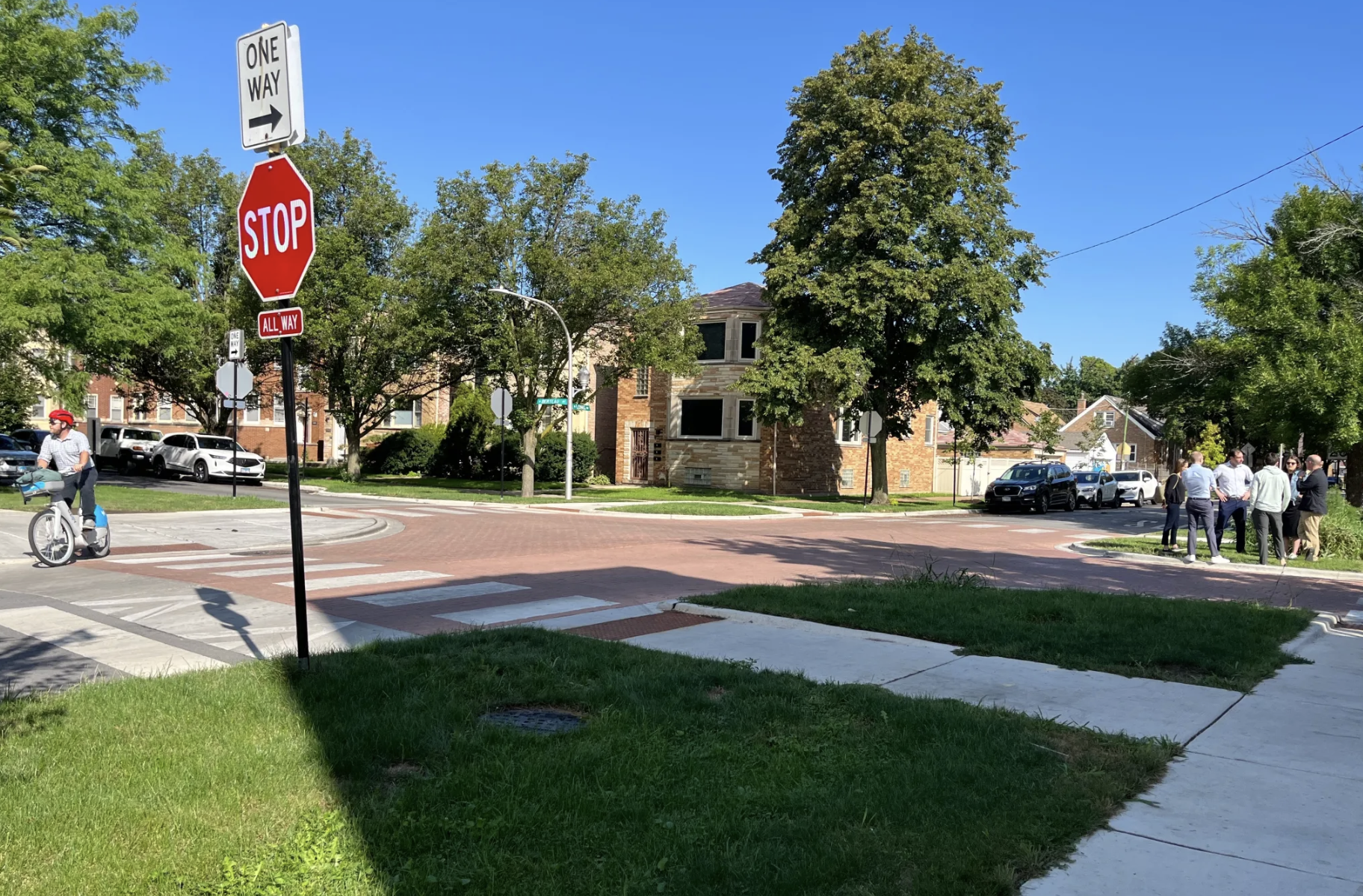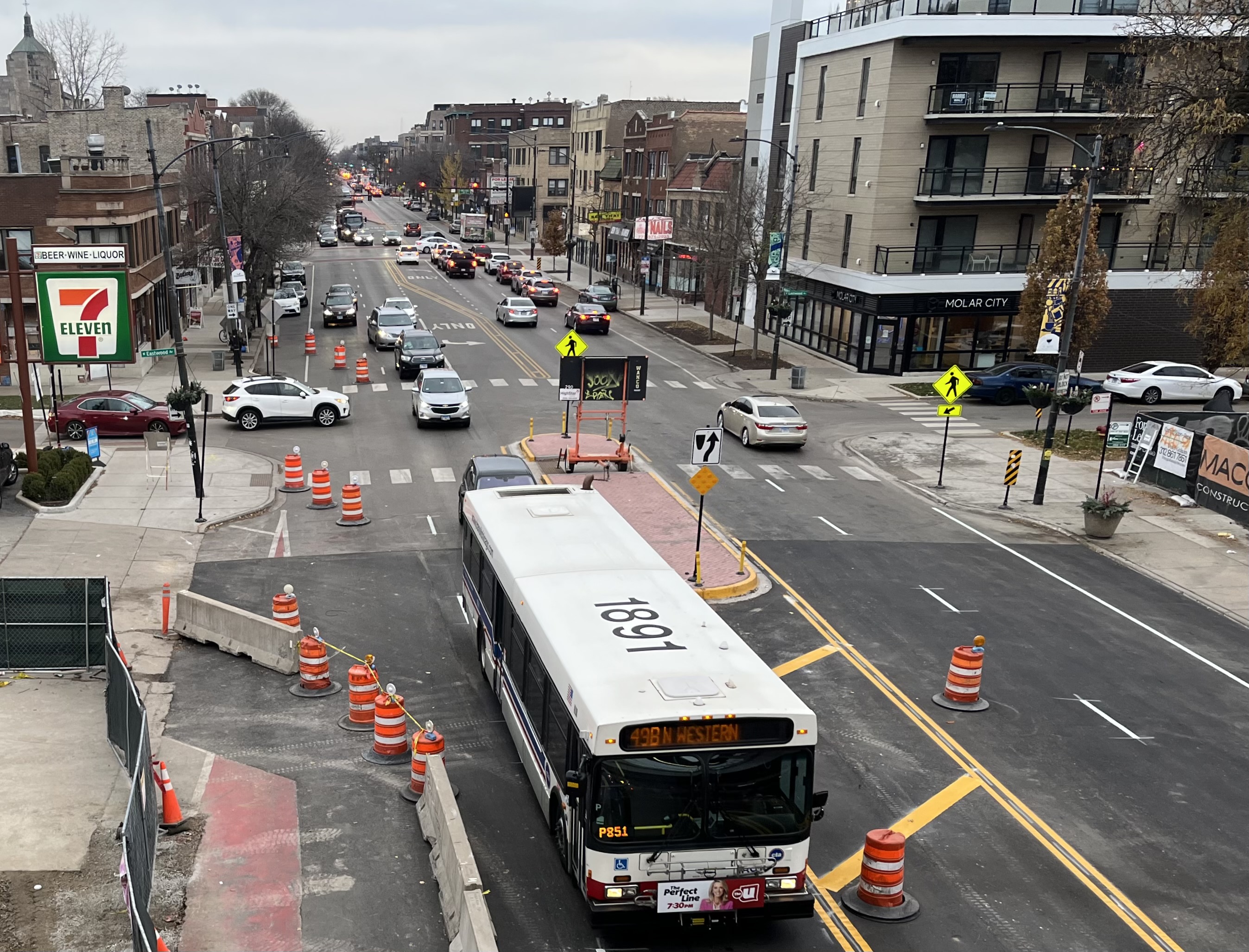
Cleveland's Healthline is widely viewed as the best bus rapid transit project in the country -- and for many good reasons. Running on dedicated center lanes, the Healthline isn't bogged down by car traffic on the most congested portions of its 7.1-mile route. With about 14,000 daily trips, the Healthline has increased ridership nearly 50 percent (though some of that is attributable to elimination of redundant routes), and local officials credit it with spurring billions of dollars of development nearby.
But it could run much faster if officials fixed one small thing that is completely within their power to address: the signal timing.
While the Healthline has many hallmarks of good BRT like the center-running lanes and off-board fare payment, it lacks transit signal priority -- the technology that turns traffic lights green as buses approach. As a result, Healthline buses don't travel nearly as fast as they should.
The Plain Dealer reported in 2010 that it takes an average of 44 minutes to travel the seven miles from downtown's Public Square to East Cleveland. That's only three minutes faster than the bus line it replaced, and more than ten minutes off the 33-minute pace that project planners promised. Despite some tweaking around the margins, not much has changed since 2010, according to sources familiar with the project.
The frustrating thing is that the Healthline could easily run faster. But the city of Cleveland simply hasn't activated the transit priority technology for most of the route, according to advocates.
"We all know it takes 10 more minutes than it should because of the light issue," said Marc Lefkowitz of GreenCityBlueLake, a Cleveland-based environmental think tank that has been active in trying to resolve the issue.
John McGovern, current chair of RTA's Citizen's Advisory Board, said shortly after the Healthline began operating, the city turned off the transit priority technology for most of the traffic signals.
"I recall hearing a line from the city that 'important people in cars' were pissed that they had to wait for a bus to make their left turn into work," he said. "The city's course of action was to turn off all the expensive sensors so one man could control the whole thing so as to be accountable to the needs of these very important people."
The Greater Regional Transit Authority would not confirm or deny that the transit signal priority has not been activated, saying that question could only be answered by the city of Cleveland. Officials from the city of Cleveland did not respond to multiple requests for an interview.
Speaking at a meeting of RTA's Citizen's Advisory Committee this week, RTA CEO Joe Calabrese said travel times have improved on the Heathline since 2010, but he couldn't give an exact run time for the route.
"I don’t know what it is set at," said Calabrese, referring to the signal timing system. "We bought the system. We tested it and it worked. Based on the contract, we turned it over to the city traffic department. It’s under their control."
Brad Chase, one of Lefkowitz's former co-workers at GreenCityBlueLake, made it a personal project years ago to try to resolve the signal timing issue. The effort resulted in a news article and several meetings with city staff but little progress, he said. Ultimately, the city chose to leave signal timing to two officials in its traffic division: Andy Cross, a traffic engineer, and Rob Mavec, commissioner of traffic engineering and streets. (Mavec did not respond to requests for an interview for this story.)
Cross and Mavec reportedly toyed with the signal timing to an extent. They lengthened the green phase on Euclid and shortened the turn phases and crosswalk phases. Since 2010, the city has also raised the speed limit for buses on Euclid Avenue from 25 to 35. But for the most part, the signal technology that RTA and the Federal Transit Administration paid for has been deactivated, according to advocates and a public official with knowledge of the situation who asked to remain anonymous.
"In [the city's] minds, there was never a need for this complicated system in the first place, and things seem to be running pretty smoothly, ridership is up, RTA isn't really complaining, so why make it more complicated?" said Chase.
UPDATE June 13, 2014 at 11:52 a.m.: According to the Federal Transit Administration, $5.8 million in federal money was budgeted for this project for station improvements, signal timing and lighting. FTA officials said only the city of Cleveland knows the exact amount spent on signal timing.





